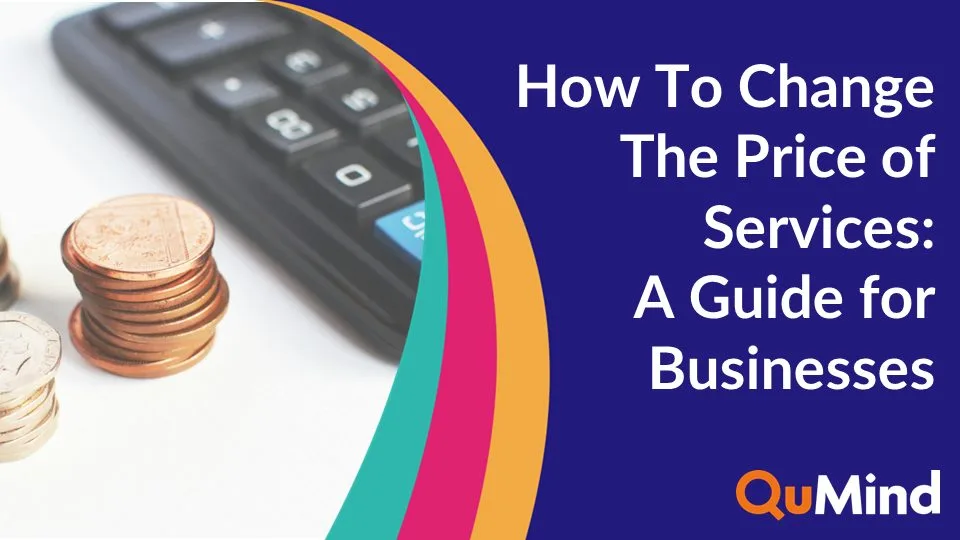Adjusting the pricing of services can be a complex yet essential strategy for businesses aiming to stay competitive and profitable. With over 25 years of experience in helping big brands price test through our comprehensive market research solutions, Qumind understands the nuances and strategic considerations involved in understanding price sensitivity. This guide will walk you through the key steps and best practices for effectively adjusting the pricing of your services.
Understanding the Importance of Pricing Strategy
Before diving into the practical steps of changing service prices, it is crucial to grasp why a well-thought-out pricing strategy is vital. The right price can:
- Enhance perceived value and brand positioning.
- Maximise revenue and profitability.
- Improve market competitiveness.
- Strengthen customer loyalty and retention.
Conversely, an ill-considered price change can lead to customer dissatisfaction, loss of market share, and damage to your brand reputation. Hence, a strategic approach to pricing is imperative.
Steps to Change the Price of Services
1. Conduct Market Research:
Begin by gathering comprehensive data on your market, competitors, and customers. Understanding the landscape is essential for making informed pricing decisions. Key areas to focus on include:
- Competitor Pricing: Analyse how your competitors price similar services. Identify the range of prices in the market and the value propositions associated with different pricing tiers – take into account multi-buys, loyalty schemes and discounts – customers do not always pay the ticket price set by the brand.
- Customer Perception: Use surveys, focus groups, and online communities to gauge how your customers perceive your current pricing and potential changes. Understand their price sensitivity and willingness to pay. There are a multitude of different techniques available to test acceptable prices – Price Sensitivity Measure (PSM, price elasticity (Gabor Granger) or the value people will pay for a brand (Brand Price Trade- Off (BPTO).
2. Assess Cost Structure:
Review your cost structure to ensure your new pricing covers all expenses and achieves your desired profit margin. This includes fixed costs, variable costs, and any additional costs associated with delivering the service.
3. Define Pricing Objectives:
Clearly articulate your pricing objectives. Are you aiming to:
- Increase market share?
- Maximise short-term profits?
- Penetrate a new market segment?
- Improve perceived value?
Having clear objectives will guide your pricing strategy and decision-making process.
4. Develop Pricing Models:
Consider different pricing models and choose one that aligns with your business goals and customer expectations. Common pricing models for services include:
- Cost-Plus Pricing: Adding a standard markup to the cost of delivering the service.
- Value-Based Pricing: Setting prices based on the perceived value to the customer rather than the cost.
- Dynamic Pricing: Adjusting prices based on demand, competition, and other external factors.
- Subscription Pricing: Offering services on a recurring basis, often with tiered pricing levels.
5. Test the New Prices:
Before a full-scale rollout, it is wise to test the new prices. Use A/B testing, pilot programmes, or controlled market experiments to evaluate the impact of price changes on customer behaviour, sales, and overall satisfaction. The Qumind platform provides robust tools for conducting such tests and analysing the results. Alternatively conjoint analysis can be used to give a fuller understanding how customers value different components or features of products or services as price is rarely evaluated on its own by customers. Conjoint analysis is based on the principle that any product can be broken down into a set of attributes (such as volume, features etc) that ultimately impact users’ perceived value of an item or service. Conjoint analysis is typically conducted via a specialised survey that the Qumind in-house research team have a wealth of experience in to lean on.
6. Communicate Transparently:
When implementing a price change, transparent communication with your customers is crucial. Clearly explain the reasons for the change, how it will benefit them, and address any concerns they might have. Transparency helps maintain trust and reduces potential backlash.
7. Monitor and Adjust:
After implementing the price change, closely monitor its impact on key metrics such as sales volume, revenue, customer retention, and satisfaction. Be prepared to make adjustments if the initial results do not align with your objectives. Continuous monitoring and flexibility are key to refining your pricing strategy.
All in all…
At Qumind, we combine decades of experience with cutting-edge technology to help businesses navigate the complexities of price testing and adjustment. Our in-house experts and advanced SaaS platform provide comprehensive support, from market research and competitive analysis to A/B testing, conjoint analysis, and data-driven insights.
Changing the price of services is a strategic decision that requires careful planning, research, and execution. By following a structured approach and leveraging expert insights, businesses can make informed pricing adjustments that enhance competitiveness and profitability.
With over 25 years of experience in helping big brands with price testing, Qumind are here to guide you every step of the way. Contact us to learn more about how our solutions can support your pricing strategy and drive your business success.



